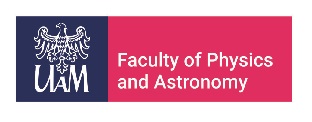16.5.2024
Magnetization dynamics and tunable GHz properties of unsaturated magnetic nanostructures: Spiral spin waves and novel conceptual designs for magnonic and spintronic devices
Dr. David Osuna Ruis, Universidad Pública de Navarra
Date, Time
16.05, 15:00 - 16:00
Magnetization dynamics and tunable GHz properties of unsaturated magnetic nanostructures: Spiral spin waves and novel conceptual designs for magnonic and spintronic devices
Unsaturated magnetic states are of high interest, more specifically the magnetic vortex configuration since the remanent state is typically dominated and stabilised by the shape anisotropy of the structure, with no need of strong or any bias fields. Due to the diversity of magnetic inhomogeneities, a high degree of reconfigurability by applying external low bias fields can be obtained. On the other hand, the inhomogeneous magnetic landscape becomes, very often, difficult to model analytically and therefore, propagating spin waves can turn out to be complicate to control in practice [1]. The aim of this work has been twofold. Firstly, to explore the most prominent magnetisation dynamics found in thick enough magnetic patches, or ‘2.5-dimensional’ nanostructures. The explored propagating modes are exchange-dominated spin waves in the range of GHz, which allows us to obtain very short wavelength spin waves that can propagate along different ‘paths’ in the unsaturated landscape. The ‘thickness and shape-induced’ enhancing of these spin waves in structures in a flux closure configuration, suggests their use as highly tuneable spin wave emitters [2]. Secondly, mathematical models are proposed for controlling the spin wave propagation in multidomain structures of various shapes and in domain walls. Their magnetic configuration is dominated by the shape anisotropy of the patch, which allows us to design particularized shapes to control the spin wave wavenumber (or equivalently, wavelength) while it propagates. Also, the modes are shown to be sensitive to bias fields, which further enhances their tuneability and reconfigurability. All this previous work is joint into potential applications for Magnonics, where spin waves are not necessarily seen as undesirable energy loss mechanisms in magnetic structures but as information carriers or the base of novel computing paradigms. Single, or interconnected unsaturated elements of various shapes are proposed to be the base of interesting highly tuneable spin wave devices.
Finally, additional work on current-driven domain wall motion will be presented. Current-driven domain wall motion is a fundamental aspect for realising spintronic circuitry and bit shift registers and racetracks [3]. In particular, domain wall motion in curved ferrimagnetic strips at the angular momentum compensation temperature is fundamental for realising fast and compact circuitry of any shape [4,5]. Numerical results exploring these physics will be shown. Besides, a geometric design for simultaneously nucleating and shifting domain walls along a ferromagnetic strip is proposed. In contrast to other typical designs, ours would require the least (three) electrical contacts to perform satisfactorily.
References:
[1] C. S. Davies et al., “Mapping the magnonic landscape in patterned magnetic structures”, Phys. Rev. B 96, 094430 (2017).
[2] S. Wintz et al., “Magnetic vortex cores as tunable spin-wave emitters”, Nat. Nanotech. 11, 948–953 (2016).
[3] S. Parkin and S. H. Yang, “Memory on the racetrack”, Nat. Nanotech. 10, 195–198 (2015).
[4] O. Alejos et al., “Current-driven domain wall dynamics in ferromagnetic layers synthetically exchange-coupled by a spacer: A micromagnetic study”, J. Appl. Phys. 123, 013901 (2018).
[5] K.-J. Kim et al., “Fast domain wall motion in the vicinity of the angular momentum compensation temperature of ferrimagnets,” Nature Materials 16, 1187–1192 (2017).

